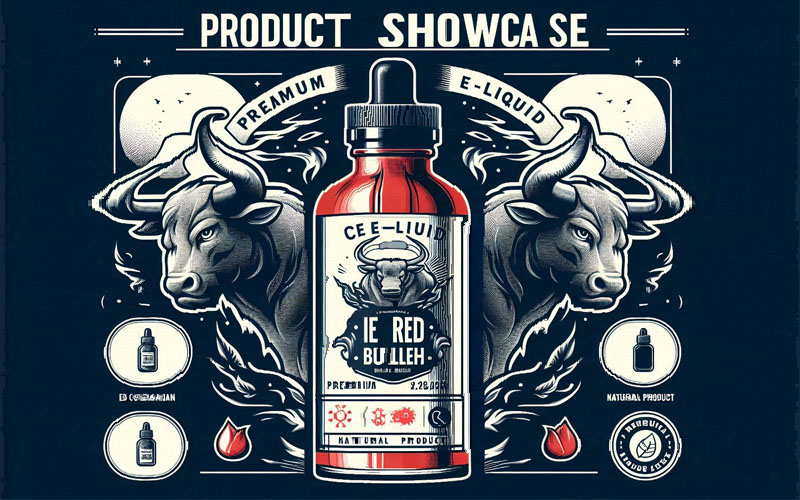E-Liquid Bottles Also Require Attention
Compared to other products, as packaging for e-liquid, e-liquid bottles serve more than just the function of storing the liquid. They also play a key role in refilling the vape's atomizer. Moreover, since e-liquid contains toxic substances, the child-proof lock feature is also a crucial consideration. To ensure a good user experience and safety for vapers, the design of e-liquid bottles requires careful attention.
1. The Function of E-Liquid Bottles
The most basic function of a vape e-liquid bottle is to store and dispense e-liquid. A well-designed e-liquid bottle needs to be highly airtight, leak-proof, and easy to operate. Airtightness determines the shelf life and flavor retention of the e-liquid. If the seal is inadequate, moisture or impurities from the air can enter the bottle, affecting the taste of the e-liquid and possibly leading to spoilage. The leak-proof design is crucial for daily safety, especially when traveling or carrying the bottle, as it prevents liquid spills.

In addition, e-liquid bottles must be designed for precise refilling. With the wide variety of vape devices available on the market, the size and shape of the refill ports can vary. Therefore, a well-designed e-liquid bottle should be compatible with various devices and allow users to control the amount of liquid dispensed accurately, avoiding waste or overfilling. Bottles with dropper or needle designs excel in this area.
2. Safety is the Top Priority
The safety of e-liquid bottles is directly related to the health of the user. The choice of material is the first consideration, with e-liquid bottles generally made from plastic or glass. Plastic bottles are more common, but their quality can vary. Inferior plastic, when in long-term contact with e-liquid, may release harmful substances, especially in high-temperature environments. Therefore, selecting high-quality, food-grade plastic is essential to prevent chemicals from leaching into the e-liquid and harming health.
On the other hand, glass bottles have better chemical stability and are less likely to react with the e-liquid. However, they are heavier and more fragile, requiring extra care during use. For households with children, glass bottles pose a higher safety risk, making shatter-resistant designs and durability important considerations for e-liquid bottles.
Moreover, since e-liquid usually contains nicotine and other chemicals, child-proof lock designs have become standard features in many e-liquid bottles. Preventing children from accidentally opening the bottle and ingesting the liquid is a key factor to prioritize in modern e-liquid bottle design.
3. Environmental Issues Cannot Be Ignored
As the vape market expands, e-liquid bottles, often used as disposable consumables, are contributing to increasing waste, posing new environmental challenges. Most e-liquid bottles are still made from plastic materials, and while they may use food-grade materials, this plastic is often not biodegradable, negatively impacting the environment. Reducing the environmental footprint of e-liquid bottles has become a critical issue for the industry.
First, promoting recycling and reuse is an effective solution. Some brands have started offering reusable e-liquid bottles, allowing users to return bottles for recycling or use designated recycling points to reduce waste. Additionally, developing biodegradable and eco-friendly materials is a major direction for future e-liquid bottle development. For example, some companies are researching the use of plant fibers or other natural materials to create e-liquid bottles that decompose more quickly after use, reducing environmental harm.
4. User Experience and Brand Differentiation
In addition to safety and environmental concerns, the user experience of e-liquid bottles directly affects customer satisfaction with a brand. The designs of e-liquid bottles on the market vary widely, with some brands focusing on aesthetic design to enhance recognition but neglecting practical convenience. A premium e-liquid bottle should not only be visually appealing but also ergonomically designed, comfortable to hold, with easy-to-open or lock caps, and smooth nozzle operation to avoid difficulties when refilling the e-liquid.
Different brands also differ in design details. For instance, some bottles use soft plastic, making it easy for users to squeeze the liquid out, but overly soft materials can make it difficult to control the amount of liquid, affecting the user experience. Harder materials, while more stable, may lack flexibility. Therefore, brands should carefully balance material choices in their designs to enhance the overall user experience.
5. Future Trends
With advances in technology, the functions and designs of e-liquid bottles are constantly evolving. Future e-liquid bottles may not just be simple storage containers but could also incorporate additional functions. For example, integrating smart chips to track usage and remind users when it's time to refill the e-liquid, or even developing bottle caps with automatic cleaning functions to reduce bacteria growth. Furthermore, increasing environmental awareness will push manufacturers to adopt more sustainable materials and production methods.
E-liquid bottles may seem insignificant, but they play a critical role in daily use. They not only affect the user experience but also involve safety, environmental, and health aspects. As the vape market continues to grow, we will see more innovative designs and environmentally friendly materials applied to e-liquid bottles. For users, choosing a high-quality e-liquid bottle can enhance their vaping experience while contributing to health and environmental protection. Therefore, careful attention to the design of e-liquid bottles is essential to meet the demands and expectations of the future market.



 Prev:Will High-Power Vapes Disappear?
Prev:Will High-Power Vapes Disappear? Next:The Advantages of Ceramic Coils in Vapes
Next:The Advantages of Ceramic Coils in Vapes


